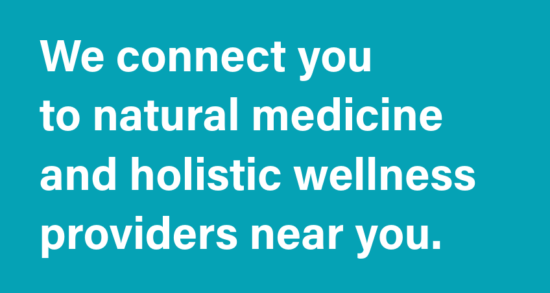When my son Joey entered palliative care second to his autism spectrum disorder with Duchenne Muscular Dystrophy, I had no idea I was preparing for another unexpected “life calling”.
I was introduced to a prominent palliative care medical director; at the time, my initial thoughts were to seek guidance in this new phase with my son’s healthcare.
I was unaware that this person was another assigned “guardian angel” for our next chapter.
Ready to beat Duchenne Muscular Dystrophy the same way, I challenged autism, I was ready take on more sleepless nights searching for answers as I did in 2009 when my own conservative views on cannabis would forever change once I saw my son smile.
- Autism, or autism spectrum disorder (ASD), refers to a broad range of conditions characterized by challenges with social skills, repetitive behaviors, speech, and nonverbal communication.
- Duchenne Muscular Dystrophy, an inherited disorder of progressive muscular weakness, typically in boys. Symptoms include frequent falls, trouble getting up or running, waddling gait, big calves, and learning disabilities. There is no cure, but physical therapy and medications, such as corticosteroids, can help control symptoms and improve quality of life.
How you communicate with your medical team is key in your healthcare plan.
After receiving credentials in Brain Health, Legal & Ethical Issues in Healthcare, and Pain Assessment and Management, it gave life to a new tier of important roles for healthcare institutions and licensed dispensaries.
I had begun, supporting medical teams several years ago and their patients via HIPPA compliant confidential consults reaching well over 700 consumer navigation plans.
The primary goal was to provide consumer-centered outcomes to promote healthy conversations with medical professionals.

The Blueprint
The criteria for autism and palliative care consumers were remarkably similar especially when I scheduled consults on the same day. Here we go,
Autism symptoms: irritability, non-verbal or inability to articulate pain or discomfort, Insomnia, self-injurious, no sense of awareness and violent outburst.
Palliative care consumers: irritability, non-verbal or inability to articulate pain or discomfort, Insomnia, self-injurious, no sense of awareness and violent outburst.
Case and point, a non-verbal adult on the spectrum who cannot communicate, that they are hungry are just as irritated as an adult in palliative care yelling at a nurse to be turned over.
What is evident with both scenarios is, cannabis therapies will allow for these types of “indicators” to be managed.
Through a cannabis professional consult with sensible outcomes and expectations a practical “navigation plan” can be coordinated for consumers and their caregivers.
The navigation plan should include product information along with dosing, frequency, and a record of any indication of possible side effects to help you gage your experience.

I started receiving calls from Southern California private nursing homes and medical teams on my ability to find the most appropriate starting points for a variety of conditions.
I was able to document indicators that helped me form a uniform starting point protocol with reliable products.
Although each adjuvant/navigation plan is specific to the consumer, the required dosing from the manufacturer never changes. The frequency of the product is individualized to the consumer’s goal.
Yes, goal – whether it is the goal to reduce constipation symptoms in
a child taken pain medication after a spinal fusion surgery or a
geriatrics consumer who was just prescribed a psychotic medication to
treat anxiety with similar bowel movement symptoms.
The goal is removal of pain or distress, physical or mental. Persons on the spectrum, live by goals and palliative care patients “live” to have goals.

In my experience in the last 11 years, cannabis products including THC that are dosed in traditional milligrams starting at 3 mg, provide medical teams the ability to adjust traditional pharmaceuticals to work in one accordance.
What I have learned is the Endocannabinoid system is forgiving,
when dosed responsibly.
Dosing in moderation is key, it’s the difference between experiencing euphoria longer than you expected and being able to counter the euphoria with coconut water or a non-THC CBD product.
CBD products with CBG percentages over 30% have proven to be just as effective for consumers who prefer to only use CBD without THC.
There needs to be a call to action within private healthcare institutions to hire healthcare liaisons that are specialists in cannabis therapies.
This new liaison is able to provide their knowledge of lab analytics, unbiased product research and support educational content that cannot be fulfilled by overworked social workers in the current healthcare models.
Whether it is palliative care or pediatrics, healthcare institutions
in legal marijuana states for medical or adult use, this liaison is the
difference between losing your current patient volume or empowering
patients with trust from their provider.
It is time for healthcare institutions to integrate these new roles that are social extensions of wellness alternatives.

The Mom
After 19 years as a mom with a nonverbal adult on the spectrum under my
belt, countless guidance consults all over the globe, and sitting at
empathetic round table discussions with medical professionals I have learned a lot.
My “trade secret” started 11 years ago, when I had to choose between law school or accepting my life purpose. I took no short cuts; I learned how to listen, observe, and solve – it is one of the most difficult “hard knock life” gifts, my son has given me.
I start every consult with my son Joey’s legacy and that is to remind medical teams and healthcare institutions, that we are all in this together.



